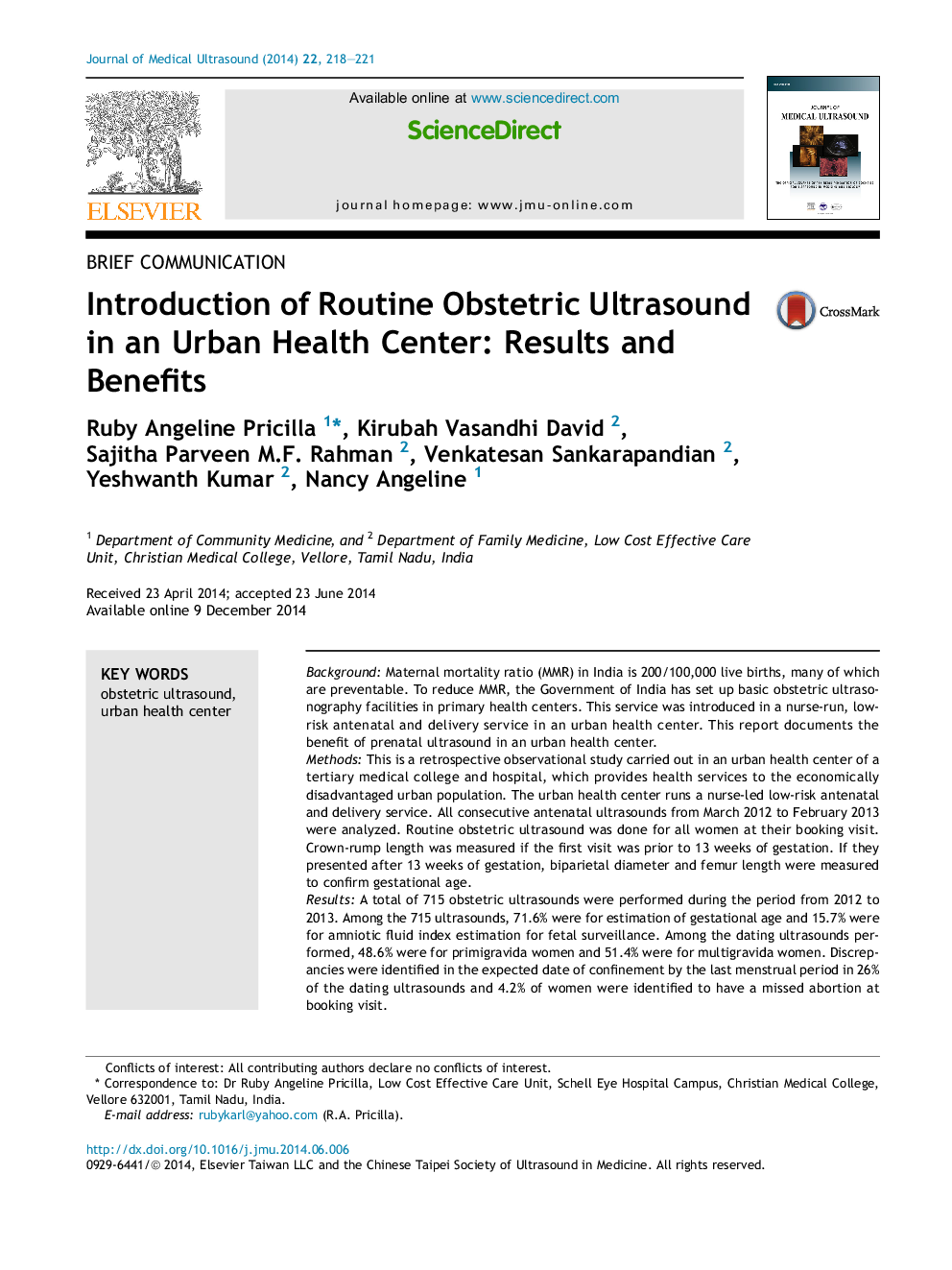| Article ID | Journal | Published Year | Pages | File Type |
|---|---|---|---|---|
| 4233075 | Journal of Medical Ultrasound | 2014 | 4 Pages |
BackgroundMaternal mortality ratio (MMR) in India is 200/100,000 live births, many of which are preventable. To reduce MMR, the Government of India has set up basic obstetric ultrasonography facilities in primary health centers. This service was introduced in a nurse-run, low-risk antenatal and delivery service in an urban health center. This report documents the benefit of prenatal ultrasound in an urban health center.MethodsThis is a retrospective observational study carried out in an urban health center of a tertiary medical college and hospital, which provides health services to the economically disadvantaged urban population. The urban health center runs a nurse-led low-risk antenatal and delivery service. All consecutive antenatal ultrasounds from March 2012 to February 2013 were analyzed. Routine obstetric ultrasound was done for all women at their booking visit. Crown-rump length was measured if the first visit was prior to 13 weeks of gestation. If they presented after 13 weeks of gestation, biparietal diameter and femur length were measured to confirm gestational age.ResultsA total of 715 obstetric ultrasounds were performed during the period from 2012 to 2013. Among the 715 ultrasounds, 71.6% were for estimation of gestational age and 15.7% were for amniotic fluid index estimation for fetal surveillance. Among the dating ultrasounds performed, 48.6% were for primigravida women and 51.4% were for multigravida women. Discrepancies were identified in the expected date of confinement by the last menstrual period in 26% of the dating ultrasounds and 4.2% of women were identified to have a missed abortion at booking visit.ConclusionMaternal morbidity and mortality can be reduced by early detection of missed abortion, placenta previa, twin pregnancy, and molar pregnancy by routine obstetric ultrasound at booking visit. Routine obstetric ultrasound at the first and second trimesters had obvious benefits in confirming the expected date of delivery in a community where remembering the last menstrual period was not a priority. Introduction of this procedure helped in appropriate management of post-term pregnancies.
